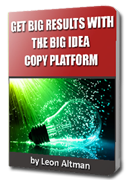Case studies are essentially problem – solution narratives. However, to flesh out a case study and make sure it communicates the messages you want to get across to your target audience, your case study must include these 7 essential elements.
1. The problem or challenge
Define the problem clearly. Detail the situation the company (or customer) was in. What does the customer have to overcome? What stood in the way? Grappling with a problem adds conflict – an essential element to any good story. To heighten impact, conflict needs to be meaningful so highlight the stakes involved. Why was it so necessary for the company to overcome this challenge?
2. The customer or company
Whether the case study centers on a person or a company, they become a character a protagonist in the story. Add details that develop the character. How long in business? Does the person have an intriguing background? What about setbacks, ups and downs? When the reader becomes interested in a character (person or company) the chances for a successful case study are much higher.
3. Process
What did the customer go through to find a solution? Highlighting the solutions that did not work is a way to contrast your product or service with the competition.
4. Discovery
How did the customer find out about solution? The discovery moment is not just another fact. It’s a classic moment in storytelling that adds dimension to the journey the protagonist went through to find an effective solution.
5. Solution
Here is the opportunity to put a spotlight on your product, service or company. Show what it can do. Detail some of the top features and benefits, but be careful to keep it educational instead of promotional.
6. Implementation
How long did it take before the solution was up and running? How much training was involved? Were there any rough patches? These are details your potential customer wants to know and answering them honestly will only add to your credibility in their eyes.
7. Results
Of course this is the part of the story that people really want to see. Be as concrete as possible. Use measurements that are meaningful to the audience or which paint the solution in a brighter light. For instance, EBITDA may be very important for some audiences while revenue gains may have more impact to others.
The specifics of case studies will differ, but making sure your case studies contain all these essential elements can help ensure they do the job you want them to do.
More at case study writer
